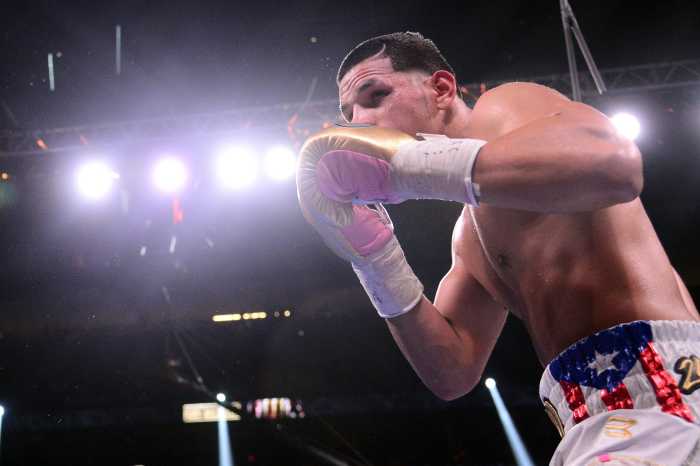As budget cuts lead to serious reductions in a range of city services, community activists across Queens are picking up the slack in one area graffiti clean-ups.
Last Saturday morning, a sizeable crowd, armed with roller sleeves and paint brushes, gathered at Skillman Park in Sunnyside for the neighborhoods fourth communal clean-up in the past year.
"It keeps getting bigger and bigger each time," said Lew Story, head of the Sunnyside United Neighborhood Network (SUNN).
With more community residents getting involved, SUNN has been able to expand its vicinity of focus, sweeping through the area between 39th and 52nd Streets, bordered by Queens Boulevard and the railroad tracks running near Northern Boulevard.
Their efforts have paid off. "They do tremendous work," said Detective Thomas Tarantola, community affairs officer for the 108th Precinct. "The neighborhood keeps getting cleaner and cleaner."
And it is getting cleaner with little or no help from the city agencies responsible for targeting graffiti, such as the Department of Sanitation.
The department has an anti-graffiti van, equipped with a computerized color matching system, that it acquired with funds secured by Councilman Eric Gioia. But a recent round of Sanitation layoffs left the van without a crew.
Now, Gioia hopes Sanitation will transfer the van to another city agency, one that actually has the personnel to use it.
"Im trying to cut through the red tape that prevents people from doing the work that needs to get done," he said.
In the past, he helped the Sunnyside group purchase a smaller power washer, using a grant. The washer sprays a chemical capable of wiping graffiti off most surfaces.
But much of Saturdays clean-up made use of old-fashioned implements brushes, paint buckets and rollers.
Dozens of SUNN members, clad in the organizations bright yellow official t-shirts, scoured the surrounding streets, targeting brick walls, wooden fences, telephone booths and the like.
"This is a great place to live, but it needs a cleaning every once in a while," said Ford Trojanowski, as he rolled a coat of green paint on a fence lining Skillman Avenue. "The only way you can beat tagging is to be more aggressive in covering it up."
The graffiti vandals are usually repeat offenders, according to Paul Madden, a music teacher at nearby PS 150. "As soon as you clean it, theyre back in a week," he said. "Most of the kids in the neighborhood are really good kids. Its a small percentage that are doing this. You see the same tags."
SUNN has also created an "adopt-a-block" program, with residents volunteering to clean new graffiti scrawl as soon as it appears in certain areas.
Such a program makes it easier for the 108th Precinct to combat graffiti vandalism, notes Sergeant John Hopkins. If the vandals try to "tag" the same spots repeatedly, local police are more likely to catch them.
Even with the significant service cuts, the mayors "Anti-Graffiti Task Force" is still coordinating city efforts to prevent the spread of a new rash of vandalism. About 40 gallons of paint were donated by the city for Saturdays clean-up.
Ray Carrero, of city halls community assistance unit (CAU), has been organizing the task forces grass roots initiatives for the past year, and he is increasingly managing with fewer and fewer resources.
His other city-funded forces have been dwindling in recent months. A group of probation workers from the Department of Corrections is now only available on weekends. And without access to Sanitations graffiti van, he has to rely on a fleet of 12 vans run by the Economic Development Corporation, which often organizes its own initiatives.
But by making use of private donations and volunteer organizations, the task force is still having successes.
When the summer clean-up season gets underway, Carrero predicts that he will have 3,000 gallons of paint at his disposal, much of it donated by private businesses like Home Depot. The CAU also has poles, roller sleeves, brushes and other items available.
Carrero encourages those community groups interested in the paint program to contact his office for an application (see sidebar).
"My strength has always been the community groups," he said. "Theyre like a standing army."
Last year, 20 local Queens organizations participated in city-sponsored clean-ups using donated paint.
"Were still trying as hard as we can to address quality-of-life issues, even with the budget cuts. I dont want communities to think otherwise."
Queens communities, however, have to contribute a little elbow grease of their own to block the spread of graffiti. And it seems that some groups, like SUNN, are very much willing to do that.
"Instead of spending time on the golf course," SUNN head Lew Story said last Saturday, "Im spending time with a brush in my hand."































